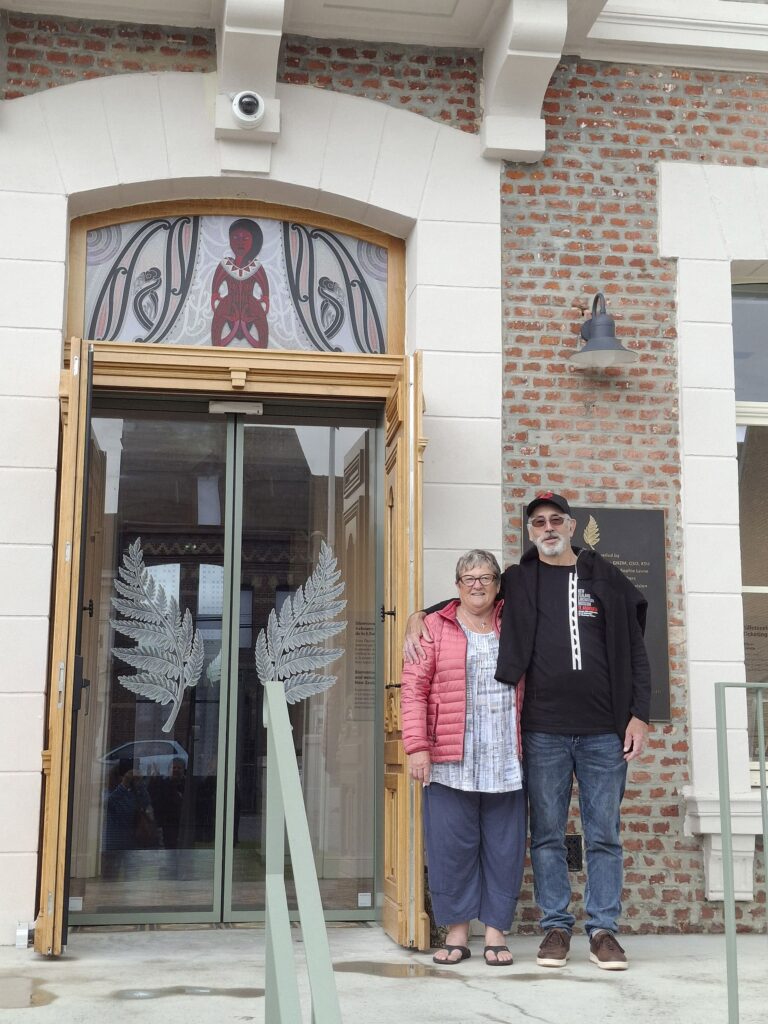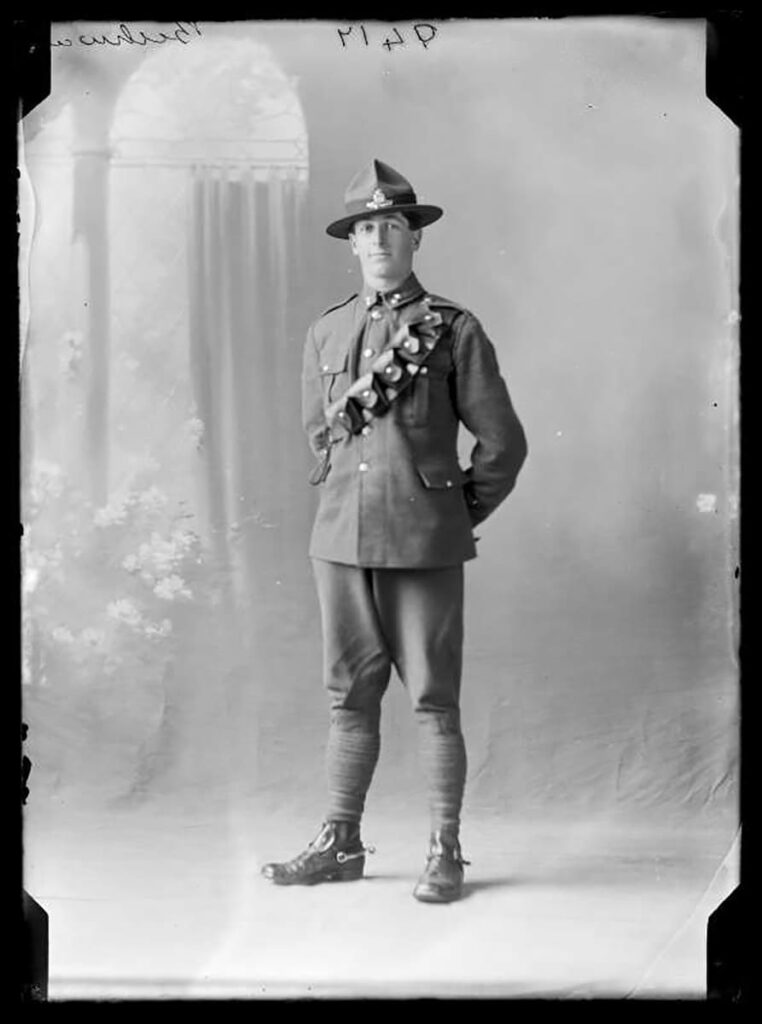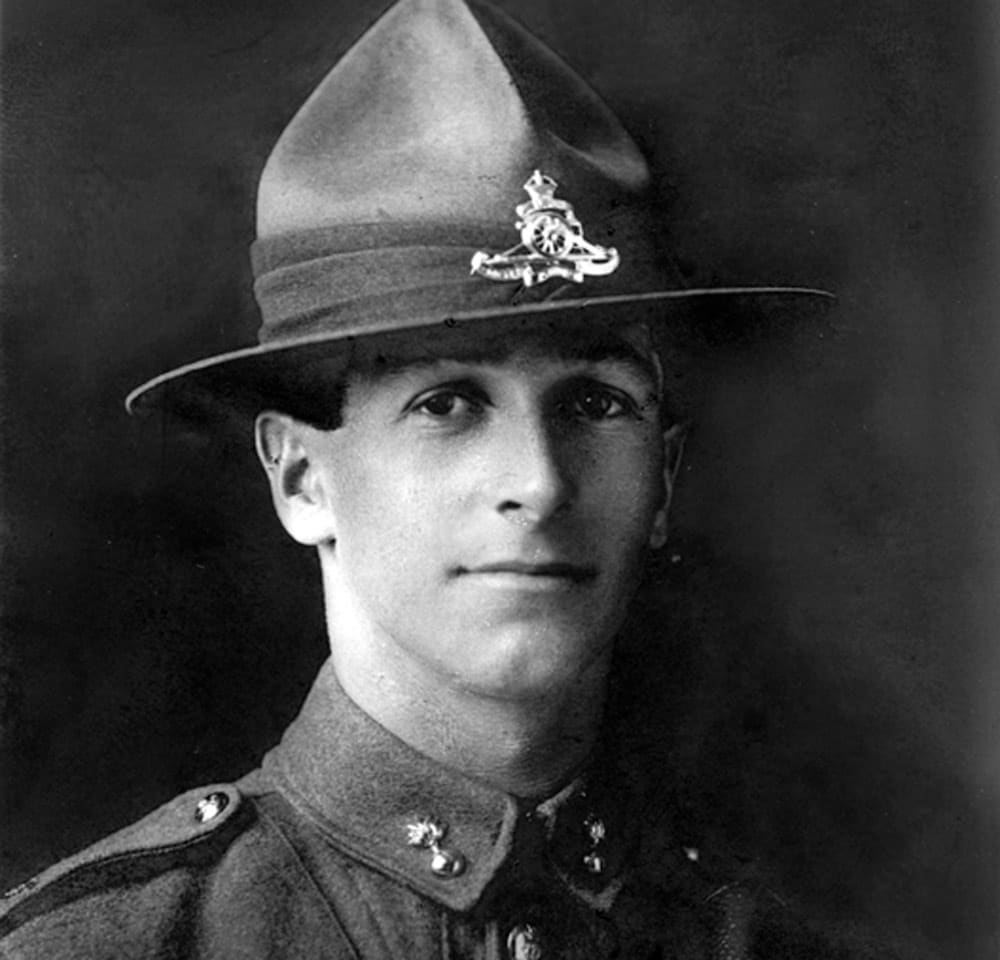A Kiwi soldier’s story of survival in the aftermath of Le Quesnoy liberation
It was the horses that saved Mac Bethwaite’s life the day after the liberation of Le Quesnoy during World War One.
“The story goes,” recalls his son Dave, “that on that day, dad was watering the horses and the Germans put a shell in amongst them. Sadly, it killed all the horses but fortunately for dad meant they protected him somewhat.”
Because Mac was in the field artillery, as a member of 5th Battery, 2nd Brigade in the New Zealand Expeditionary Force, he did not enter the town of Le Quesnoy on the day of the liberation on November 4.
“He was part of the softening up process beforehand,” says Dave.
However, in the aftermath of the liberation, Mac was tending the horses in nearby Mormal Forest when he came under fire. “He escaped with a leg wound. It’s just an amazing story. It also made me realise what the soldiers were going through and the incredibly challenging and desperate conditions they were living in.
“I’ve seen pictures of the artillery men dragging their weapons through the mud and, well, Dad would have been in amongst that.”
Mapping Mac’s travels
Dave and his wife Glenys visited the Western Front in the first half of 2024, visiting many of the locations Mac served, including in Ypres, Arras and Le Quesnoy.
Because of the wet weather at the time, he experienced the sticky mud of the Western Front first hand. “It’s just incredible. The nature of the soil, it’s just a bog and these guys were fighting in it Our guide took us around various places of interest and explained to us the conditions that the guys fought in – the mud and total devastation.”
During their stay in Le Quesnoy, they visited the NZ Liberation Museum – Te Arawhata where Dave discovered more detail about two key parts of his father’s war experience.
“There is an incredible room in Te Arawhata where you can delve into your family’s history. Two of the storyboards jumped out at me: One was the battle in Mormal Forest where Dad was wounded and the other documented the hospital at Beaudignies where he was sent for initial treatment.
“The story mentions that on the 5th of November, 20 New Zealanders were killed in the forest. So, Dad was one of the lucky ones. That was very emotional. There was history of Dad right in that room. It was overwhelming, it really was.”
Dave says because Mac was not a letter writer, it has been through war records, other soldiers’ diaries, and experiences like visiting Te Arawhata that has enabled him and his family to piece together Mac’s life during war time.


The family’s Nelson legacy
The Bethwaite family has a long history in Nelson. Mac’s father, Henry Bethwaite, was a master builder and architect who designed and built prominent Nelson structures in the late 1800s and early 1900s, such as the Theatre Royal, St Johns Church, All Saints Church, and The Bishops School.
He died aged 82 in 1921.
Mac was born on September 27, 1897.
“We think he signed up for service a bit underage because his service records give his birth date as 1896,” says Dave.
Dave, who at 71 is Mac’s youngest son from his second marriage, has heard stories about his father being a prankster when he was young.
“He loved playing the fool judging by what I’ve heard,” he says.
Before the advent of the flush toilet, homes had out houses and the contents were collected in cans by a person with a horse and cart.
“On one occasion when it was picking up in dad’s street, some little urchin, my father as it transpired, had unhitched the horse and the cart freewheeled down the hill with the contents of the cart going flying.”
Mac, whose service number was 35237, left for the war on January 1917 on board the Waitemata which had the nickname The Wobbler because it was “not particularly stable”.
He arrived in France on June 23, 1917, and served until being discharged after getting wounded in November 1918.
After the war, Dave has heard from family that Mac was very different.
“Whether it was the war and then the depression of the 30s, things changed after that. He was very quiet. He wasn’t the same person.”
Dave remembers as a kid he loved acting out battles complete with shooting and bombing sound effects. “I was doing this in front of dad, and he never said a thing about it, he never stopped me, but it had to have affected him. But I guess I was just being a kid.”
Mac had a wide range of jobs, including being an ambulance driver, working on the development of the Takaka Hill road, and as a nightwatchman at the port.
He met Dave’s mother, Geraldine Winifred (known as Winnie), when he was driving ambulances as Winnie was a nurse at Nelson Hospital. Sadly, Winnie died when Dave was nine years old. Mac passed away in 1967 aged 69 years.
“One of my memories of him was helping him affix the crown to his RSA badge,” he remembers fondly. “Back in those days, RSA members had a badge with a little crown that clipped onto it. Each year that crown was a different colour. The RSA sent them out when they paid their subs each year. I used to help dad put the crown on his badge. That really sticks in my mind.”
The power of Te Arawhata
While in Le Quesnoy the Bethwaite’s met Brendan and Jo Lindsay, who along with the late Richard Izard are the founding partners of the NZ Liberation Museum – Te Arawhata.
“I’ve never been to a museum like it,” says Dave. “It is testament to the generous partners, donors and members of the public who have helped make the museum a reality.
“It’s so different from other museums, which are full of artefacts. Whereas Te Aarwhata, and the experience created by Wētā Workshop, tells this wonderful story. It just makes it so real.”
The rolling wall of names at the museum, which features every New Zealand serviceman involved in World War One, highlighted the scale and impact of the war for the Bethwaites.
“We thought we’ll sit there and eventually Dad’s name would come up. We waited and waited and nothing much happened. I went to the inquiries desk and the woman said it was over eight hours long.
“There are more than 10,000 names and for me, it’s just so moving, because coming from a small place like New Zealand, that many names is incomprehensible really.”
